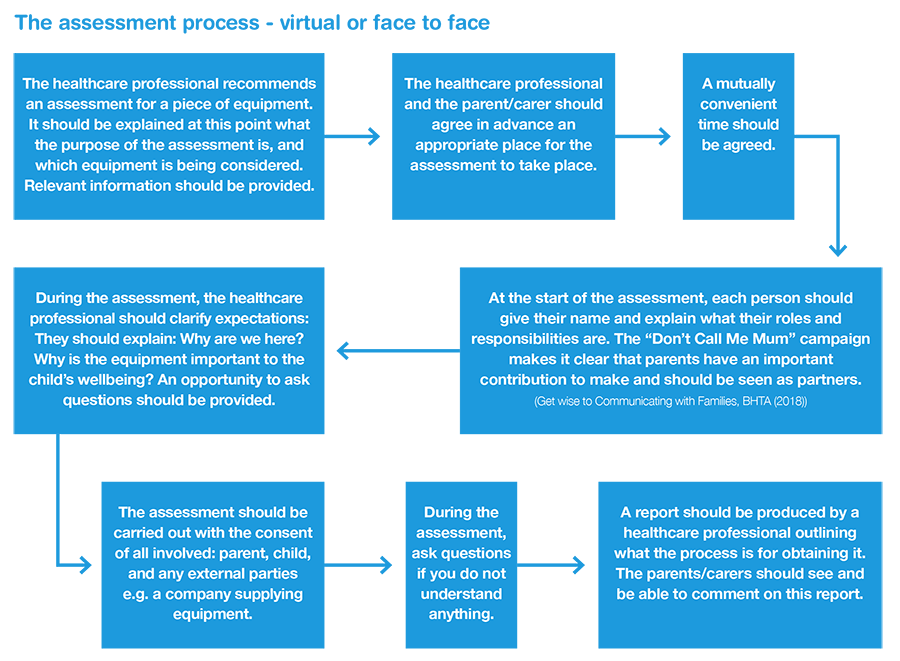Last Updated on 07/12/2023 by Sarah Sarsby
The BHTA has produced this guidance to ensure families and carers understand what an assessment is and what outcomes should be achieved.
Assessments can be face to face or virtual, depending on the type of equipment being assessed for. Regardless of whether the assessment is online or in person, there are certain things you can do to make sure you and your family get the most out of the process.
A health professional will carry out the assessment. They must be qualified, trained, and experienced in identifying needs and offering suitable solutions for disabled children.
If your child has an education, health and care plan (EHCP) in place, it is important that any needs identified in the assessment are included and specified in the plan. There are legal obligations for the EHCP to cover all needs identified in relation to education, health, and care, including equipment provision (as stated in the Children & Young People’s Act 2014).

Questions to ask before the assessment:
It’s important to know where the assessment will take place. If your child’s needs are such that you would prefer the assessment to take place at home, you can request this. However, some assessments may need to take place in a clinic for practical reasons, in order to achieve the best outcome for your child. An example of this might be when the equipment being considered needs to be tried out.
If your assessment is virtual, it is important to know how the call will be accessed and which platform it will be on (Zoom or Teams, for example). Any reputable organisation will be happy to take you through a trial call so any technical difficulties can be ironed out.
If the assessment is for larger pieces of equipment, it can be helpful to see the room where it will be used. It can also be useful to have a tape measure to hand to give dimensions, if needed. There may be further questions which will be asked on the day, and sometimes a physical assessment may be necessary following a virtual one.
If the assessment is virtual, it is important to check your internet connection to make sure it is working correctly.
Prepare your child for the assessment by explaining what will happen.
Follow the “Nothing about me, without me” approach.
It’s important that the assessment does not feel rushed. If you are concerned that your child is uncomfortable during the assessment and that it won’t be possible to get an accurate picture of their needs, ask to reschedule.
If you have concerns about the equipment being discussed, you can raise them during the assessment.
If the therapist believes a specific piece of equipment is needed, they need to ensure that either you or the family understand why and how it will contribute to your child’s wellbeing.
Before the assessment is completed, there should be time to ask questions. You may want to know:
